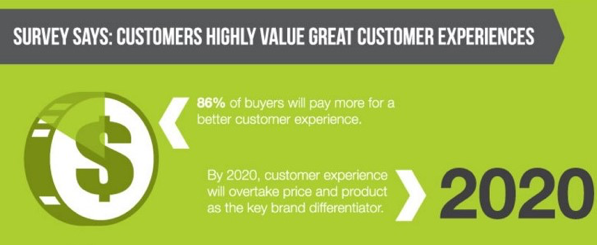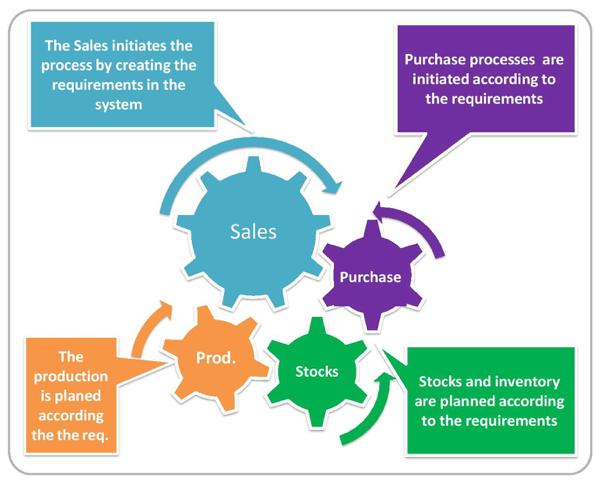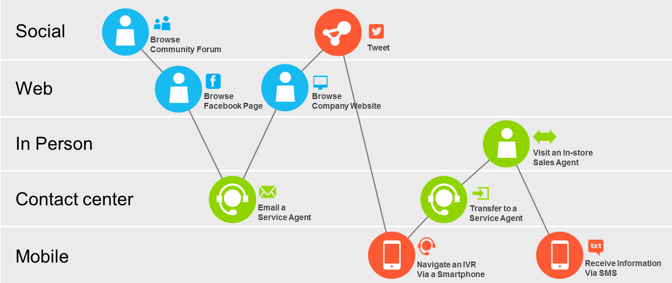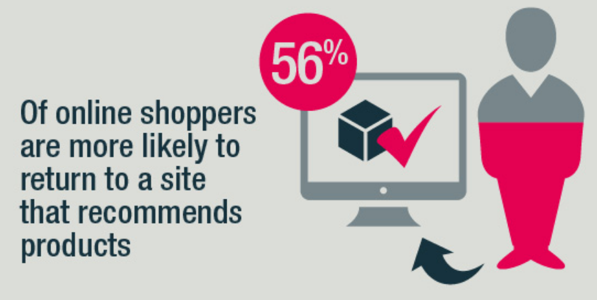— April 26, 2019
Operating a successful eCommerce business is more than just getting more customers and selling more products. As your company grows, the various operational tasks associated with running the company will increase exponentially.
Using individual software applications to handle these functions (e.g., accounting, inventory management, order entry) in a piecemeal manner often creates friction and inefficiency.
Not only is a lot of time spent on the repetitive task of manually entering and verifying data but the process is also prone to errors and delays.
The siloed approach can lead to a disjointed customer experience that impacts conversion and retention rates.
Thankfully, you don’t have to let this growing pain hold you back from growth and expansion.
You can use CRM (customer relationship management) and ERP (enterprise resource planning) systems to coordinate and consolidate the many customer-facing and back-office activities required for streamlined operation and effective sales and marketing processes.
By integrating CRM and ERP systems with your eCommerce platform, you can reduce errors, increase cost-efficiency and improve customer experience to boost your bottom line.

Streamline Your eCommerce Operations with an ERP System
Enterprise Resource Planning software integrates the management of core business processes (e.g., inventory and order management, demand forecasting, accounting, human resources) onto one centralized platform to enhance communication and collaboration among various departments.
An ERP system helps streamline many operational processes and ensures that critical information is shared across the entire organization in real-time for better decision-making.
There are many benefits to integrating an ERP system with your eCommerce platform:
Display Accurate Availability and Shipping Information
By integrating the eCommerce platform with an ERP system at various stages of the shopping process (e.g., online ads, product detail page, checkout), you can display real-time inventory information to not only avoid selling a product that’s out of stock but also apply urgency (e.g., “2 left in stock”) to increase conversion rates.

An ERP application can verify customer information at checkout to identify the best warehouse from which the products can be shipped so you can shorten delivery time and provide an accurate delivery date.
By integrating an ERP system with the customer interface of your eCommerce website, you can deliver a seamless purchasing process and improve the customer experience.
Improve Demand Forecast and Inventory Management
Apply insights from your eCommerce platform’s analytics (e.g., search, browsing and purchasing behaviors) to inform demand forecasting, supply chain management and inventory management in the ERP system.
The ERP system can also gather data and insights across various departments in your company (e.g., customer service, sales, marketing) to determine consumer trends, forecast demand and improve inventory planning.
The information exchange between the ERP system and the eCommerce platform can help you better predict which products will be popular and how much you should keep in stock to ensure availability and optimize profits.

Consolidate Back-Office Functions
An ERP solution allows you to integrate many back-office activities needed to run an eCommerce business.
You can handle inventory management, accounting, contact management, warehouse management and order entry and processing all in one centralized interface to streamline processes and facilitate collaboration across various teams–eliminating the time-consuming and error-prone process of manually re-keying information from one system to another.
All the data will be synched up in real-time to prevent incorrect business information, data loss or miscommunications, which could increase cost, impact customer experience and hurt your sales.
Increase Efficiency with Automation
As your business grows, your employees may be spending more time on doing recurring and repetitive tasks manually.
Automating these tasks can save hours of manual work so you can cut down on cost, improve efficiency and minimize human errors.
Some of the common tasks you can automate with an ERP are:
- Emailing sales invoices or notifications when a product becomes available to customers to facilitate sales and payment.
- Creating a sales order and allocating inventory to the order.
- Tracking and monitoring receivables so notices and updates can be sent out automatically to shorten receivable cycles and increase cash flow.
- Coordinating workflow among departments to improve efficiency and reduce bottleneck.
- Replenishing products when the stock is low.
Facilitate Decision-Making with Robust Reporting
An ERP allows you to automatically generate reports with pre-determined criteria and have the reports emailed to the appropriate decision-makers to ensure that relevant data and analytics are distributed in a timely manner.
These reports can pull information from different departments to provide a holistic view of the business operation while the data can be presented in different ways based on the roles of the recipients.
In addition, decision-makers can access key metrics in real-time on a unified dashboard so they can take action based on the latest information.
Streamline Your eCommerce Operations with a CRM System
A Customer Relationship Management platform helps manage all your company’s relationships and interactions with prospects and customers. It allows you to stay connected, build trust and cultivate relationships that will ultimately improve customer acquisition and retention.
One key component of a CRM system is a centralized customer database, which allows everyone in your company access to real-time customer data. It helps streamline communication and collaboration while improving customer experience.
There are many benefits to integrating a CRM system with an eCommerce platform:
Facilitate Omnichannel Customer Experience
Customers tend to interact with an eCommerce merchant on multiple devices (e.g., desktop, tablet, smartphone) and through various channels (e.g., website, social media) at different points of their customer journey.
Consumers may start browsing on a smartphone and choose to complete a purchase on a desktop computer. Or they may first interact with customer service via social media and later on continue the conversation by phone, expecting to pick up where they have left off seamlessly.
A CRM’s centralized customer database, when integrated with an eCommerce platform, allows you to deliver a seamless omnichannel customer journey across multiple devices and touch points–streamlining the shopping experience and accelerating the customers’ progression down the sales funnel.

Reduce Customer Service Cost
Connect customer support requests from your eCommerce platform with the 360-degree customer profile in the CRM system so agents can deliver a seamless customer experience.
For example, customer care reps can refer to a customer’s order history, geographic location and preferences to offer the most appropriate assistance.
In addition, you can streamline customer experience by combining billing and relationship tracking on one platform.
Streamline Sales and Marketing Processes
A CRM system can handle many essential sales and marketing processes required by eCommerce businesses on one single platform to streamline workflow and reduce cost.
For example, you can integrate functions such as lead generation, email marketing, lead nurturing and social media marketing to improve the effectiveness of your campaigns.
You can also combine a visitor’s real-time browsing behavior with information on the customer profile to automatically deliver dynamic content, personalized product recommendations and targeted promotion to increase sales and improve retention.

Access to Real-Time Analytics
Real-time data and analytics gathered from the eCommerce platform and customer profiles allow you to fine-tune your offerings so you can respond to consumer trends and market demand in a timely manner.
You can also combine analytics on customer behaviors with operational data to generate strategic insights (e.g., the best timing to hold a sale or how specific events affect consumer behaviors) that can inform inventory planning, demand forecasting and supply chain management.
Automated Reporting
You can fine-tune operations, increase efficiency and improve customer experience by collecting and analyzing the appropriate data.
A robust CRM system allows you to synch up customer information with eCommerce data and automatically generate real-time reports to support agile decision-making.
Such integrated reporting can help reduce friction, eliminate wasteful processes, cut down on repetitive and recurring manual tasks, enhance productivity and improve efficiency.
Conclusion
Robust eCommerce platforms, such as Magento, Shopify Plus and SAP Hybris, offer seamless integration with many ERP and CRM systems so you can streamline operations, lower costs and minimize errors while delivering a seamless customer experience that meets consumer expectations and drives conversions.
For example, Spanx increased average order value by 28 percent and Just For Men boosted total sales by 200 percent after migrating to Magento.
Request a complimentary consultation here.
Digital & Social Articles on Business 2 Community
(89)








